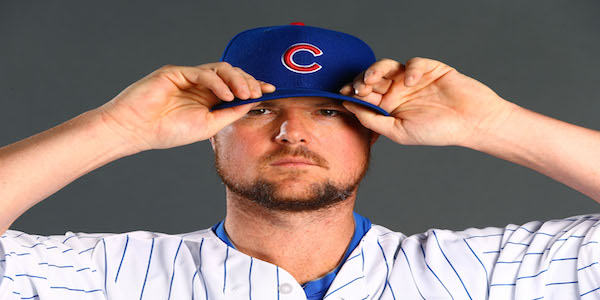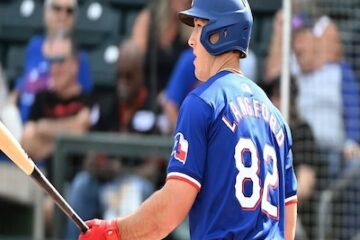Using ERA-FIP To Identify Starting Pitchers to Trade or Acquire

In this piece, I’ll be looking at one of my favorite strategies to identify starting pitchers to consider trading (or “selling high” or “buying low” as some continue to refer to it) or trading for on the trade market for fantasy baseball in 2015. Each and every baseball site you visit can probably provide you with a strategy to identify players to target or avoid via trade.
One of my favorite statistics to look at for pitchers is ERA-FIP on FanGraphs. ERA-FIP provides users with the difference between a starting pitchers current earned run average and their fielding independent pitching. According to FanGraphs, Fielding Independent Pitching “measures what a player’s ERA should have looked like over a given time period, assuming that performance on balls in play and timing were league average.” Moreover, FanGraphs suggests that “FIP does a better job at predicting the future than measuring the present, as there can be a lot of fluctuation in small samples.” The idea here is to look for pitchers whose ERA appears to be outperforming or falling behind their FIP. These may be players that have been “lucky or unlucky” to start the season, but theoretically should regress to the mean and fail to maintain that level of success or failure as the season wears on.
In addition to looking for players with higher or lower ERA-FIPs, I’ll take a look at BABIP, K% and BB% to guide my search. Note: We do need to be a bit cautious with this data as FIP isn’t the perfect statistic and there have only been roughly four turns in team’s rotations so far in ‘15. This discussion should be used as a starting point in your research. The chart I used for this research can be found at the conclusion of this post.
Three pitchers to target or buy:
Jon Lester | Cubs
If you take a look at the chart I’ve embedded below you can see that Lester’s current ERA-FIP of 4.01 is the highest among qualified starters. At the root of his 6.23 ERA is a batting average on balls in play (allowed) of .424. Yes, that means if a hitter gets the ball in play — not including balls that are hit for home runs — they own a .424 average. Additionally, Lester owns a strand rate (LOB%) of just over 58.3%. His career BABIP and LOB% rates sit at .302 and 74.5% respectively, suggesting the southpaw is due for some better luck between now and the end of the season. His swinging strike rate (SwStr%) is up to a career-high 10.4%, his K%-BB% is up, but the velocity is down just a tick across each of his offerings. While some may proceed with caution given the dip in velocity, I’m not all that worried at this time, especially since you may be able to convince his owner to surrender the lefty at a slight discount considering his ugly ERA.
Clay Buchholz | Red Sox
Like his former teammate above, Buccholz has been an early-season victim of a spiked batting average on balls in play (.403 vs. a career .208 BABIP) and a suppressed strand rate (59.1% LOB% vs. a career 71.4%). The right-hander is missing more bats than he has in the past through four starts (10.4% SwStr%) and his strikeout minus walk rates (K%-BB%) are up to 21.6%. Additionally, hitters are offering more at Buchholz’s pitches (47.1% Swing% vs. 44.9% career) — especially those out of the zone (33.8% O-Swing% vs. 28.2% career) — but, they are making less contact (77.4% Contact% vs. 79.7% career). While the 30-year-old’s 1-3 start with a 5.76 ERA are worrisome, I encourage you to dig a bit deeper to see that you shouldn’t be giving up on his at this time, in fact, you may want to go out and acquire him on the cheap if provide the opportunity.
Michael Pineda | Yankees
Pineda’s ERA-FIP is not as extreme as Lester’s or Buchholz’s, but his K%-BB% (24.3%) is the most impressive among pitchers with at least a one-run difference between their ERA and FIP. Unfortunately for those in the market for starting pitchers, Pineda is 3-0 with a 3.86 ERA and a 1.13 WHIP — good enough to be a top-40 pitcher in Yahoo!’s game at the moment. It’s not likely that you’ll be able to acquire Pineda at a discount, but that doesn’t mean I don’t think it’s worth exploring. Maybe you can use the fact that his fastball velocity is down a tick as some leverage in trade talks.
Three pitchers to avoid or sell:
Nick Martinez | Rangers
Nick Martinez is off to a quick start to the 2015 season. The 24-year-old is 2-0 in four starts with a 0.35 ERA and a 1.12 WHIP. But Martinez owns a -3.10 ERA-FIP — the worst among qualified starters on the list — meaning his ERA is expected to drop towards the 3.45 FIP. And while the 3.45 FIP still seems reasonable, Martinez’s current 2.9% K%-BB% fails to meet our fake team’s needs. He’s only owned in 35% of Yahoo! leagues at the time being, so I’m not sure someone would be willing to surrender significant assets to acquire him, but I would be looking to capitalize on his early-season success via the trade market if possible.
Doug Fister | Nationals
Through four starts, Fister is a mediocre 1-1 with a 3.28 ERA and an awful 1.46 WHIP. Furthermore, Fister owns just a 1.8% K%-BB% in over 24 frames on the bump. Not that Fister missed bats at an elite level over his career or anything (career 6.7% SwStr%), but that number is also down to 4.9% so far in ‘15. The average velocity on each of his offerings except for the change-up is down a tick or more, which is another concern. If you’re not willing to deal Fister, you should be extremely selective when putting him in your starting lineup. But i’d be shopping him I could.
Cole Hamels | Phillies
Our ERA-FIP research also points us towards Phillies’ ace Cole Hamels. Hamels is just 1-3 through five starts and owns a 3.19 ERA to go along with a 1.19 WHIP. His early-season luck (.192 BABIP, 91.2% LOB%) suggests his current 3.19 ERA could head south towards the 5.56 FIP he currently owns. Hamels’ 25% K% is excellent, but his 12.5% BB% is awful. Despite the excellent strikeout rate, his SwStr% is down to 10.8% (12.1% career SwStr%) and the velocity on his cutter is down a hair, although he’s throwing it less frequently right now. For those who’ve followed Hamels’ career, you know that he’s been a much better pitcher down the stretch, so you may be hesitant to place him on the trade block. Especially since we’re not exactly sure which uniform he’ll be wearing to finish out the year.
Below is the chart I used for the research. Here is a link to it directly.






